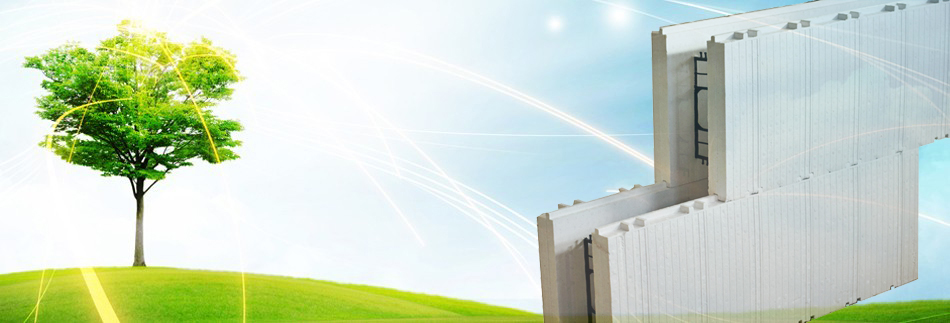
Constructing quality structures that are durable and sustainable, with more emphasis on energy efficiency, is a priority. Additionally resilient construction has also been identified as an important factor in building construction practices, integrating entire building envelopes into a cohesive system. Concrete is the most used construction material in the world and is increasingly used to achieve more sustainable buildings.
This ultimately is moving today’s industry toward more sustainable structures that are longer-lasting and resilient enough to reduce rebuilding, thereby reducing energy consumption.
Insulated concrete forms have many benefits in terms of sustainability, including:
- High R-values are readily achieved, with less potential for installation problems
- Excellent thermal performance due to very low infiltration rates
- Extreme durability of both the insulation and structural components.
- ICFs are very lightweight, reducing fatigue of installation crew.
- Will not rot or rust.
- Versatility: ICF homes can be designed in any style, and will accept any traditional exterior finish including vinyl, wood siding, stucco, and brick.
- Peace and quiet: in sound transmission tests, ICF walls allowed less than one-third as much sound to pass through over ordinary frame walls filled with fiberglass insulation.
- Greater comfort and lower energy bills: a combination of high R-values, low air infiltration, and high thermal mass accounts for the 25 to 50% energy savings of ICFs versus traditional wood or steel-framed homes.
Methods, Impacts, and Opportunities in the Concrete Building Life Cycle
The Concrete Sustainability Hub Division of MIT conducted research on the building life cycle of Insulated Concrete form construction as compared to other types of construction.
Life cycle assessment (LCA) offers a comprehensive approach to evaluating and improving the environmental impacts of buildings. This research explores and advances three key areas relevant to the field of buildings LCA: methodology, benchmarking, and impact reduction opportunities. First, a general LCA methodology is put forth that describes the concepts necessary to develop and conduct a comprehensive LCA for buildings. Second, the methodology is applied to a range of buildings in order to benchmark the current emissions of concrete buildings and compare them to other construction materials. Finally, opportunities for emission reductions are identified and quantified using the LCA models.
This research was carried out as part of the Concrete Sustainability Hub at MIT, which is supported by the Portland Cement Association (PCA) and the Ready Mixed Concrete (RMC) Research and Education Foundation.
CLICK HERE to learn about how ICF Construction compares to other types of building materials in the Life Cycle Analysis.
- For more information on the sustainability initiatives and our Advantage ICF System, visit www.pfbsustainability.com






